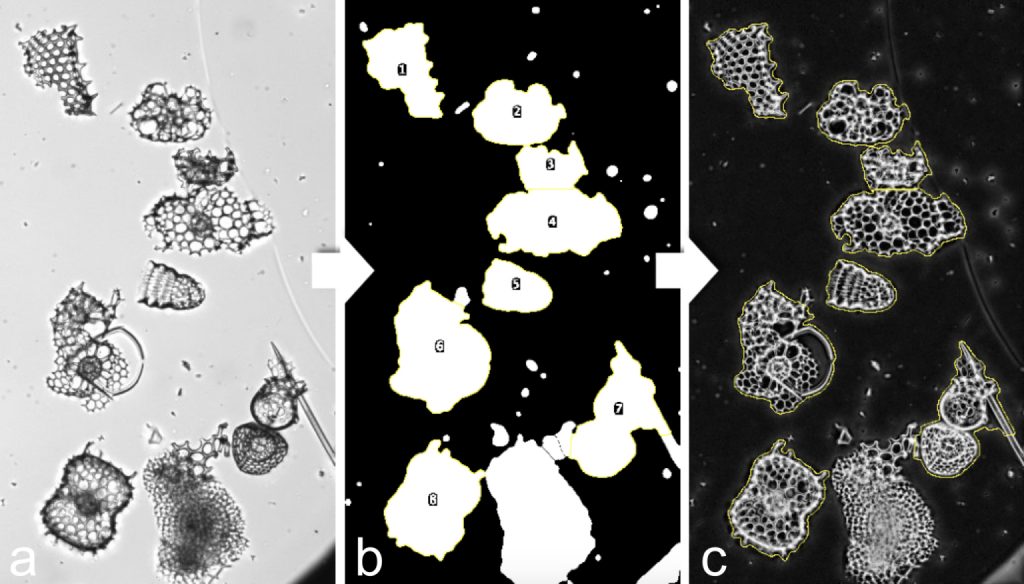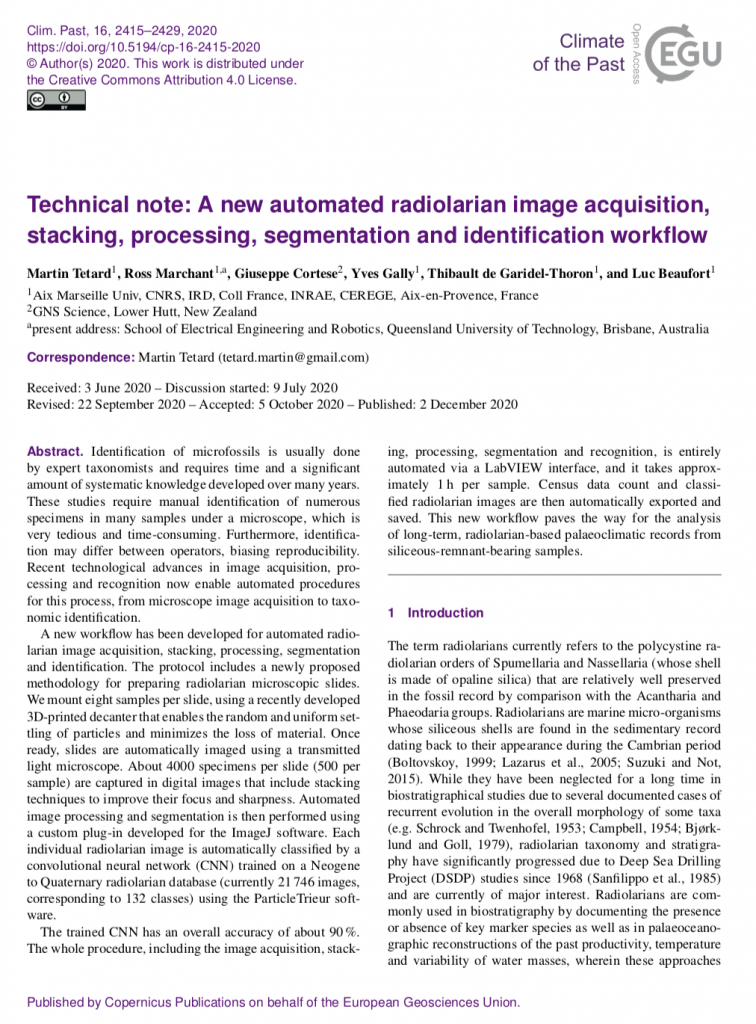All the files available to download here were acquired at CEREGE (CNRS, IODP-France), GNS, and Kyushu University, and are properties of these laboratories. The databases are made publicly available according to each contributing institution’s data policy and adhere to open data standards such as Creative Commons CC-0 and CC-BY. When a dataset is accessed and used, users agree to comply with all of the terms of the respective licenses.
Radiolarian Database
The published version (July 2020; published in Tetard et al., 2020) of the database (21,746 images divided into 132 classes; Miocene to Recent, low latitudes) is freely available here.
The last version (July 2021) of the database (24,603 images divided into 149 classes, Miocene to Recent, low and high latitudes) is freely available here.
All the files and images contained in the database are properties of the CEREGE laboratory affiliated with CNRS, IODP-France and GNS.

If you are willing to participate in the improvement of this database, if you have images of missing species, or images to add to an under-represented species, please contact us.
Open access publication
This full study and new workflow has been published in the open access Climate of the past journal and can be downloaded here.
New Decanter and slide guide
The DecanteurRad12x12x8.stl and Slide_guide.stl files are available here for free, and are introduced in “A new automated radiolarian image acquisition, stacking, processing, segmentation, and identification workflow” publication available here.
A minimum layer height resolution of 0.20 mm is recommended.

AutoRadio_Segmenter.ijm ImageJ plugin
The AutoRadio_Segmenter.ijm plugin (AUTOmated RADIOlarian Segmenter) is part of the AUTOmated SEGMENTER Suit. It is a free ImageJ / FIJI Plugin that is used for automated segmentation of microscope images that contain several microfossil specimens per image (FOV).
Advantages of this plugin are multiple: it is fast to proceed, can perform image processing at the same time (contrast, inversion, watershed, morphometric measurements…), and export the segmented images into a series of folders that copy the original architecture of the cores / samples folders. (see video below).
The AutoRadio_Segmenter.ijm allows the automated processing of a root folder (“Core”), containing subfolders (“Samples”) of FOV images (Fields of View, a) that will invert them, create Region of Interests (ROIs, b) for each particle and segment and save them as individual images into separate subfolders corresponding to the different “Samples” of the processed root “Core” folder.

Some additional plugins (e.g. the BioVoxxel plugin « Watershed Irregular Features ») might be needed, according to your objectives. To use it, download the .ijm file here and save it into the ImageJ/plugins folder, and it will be available to use on after restarting ImageJ.
